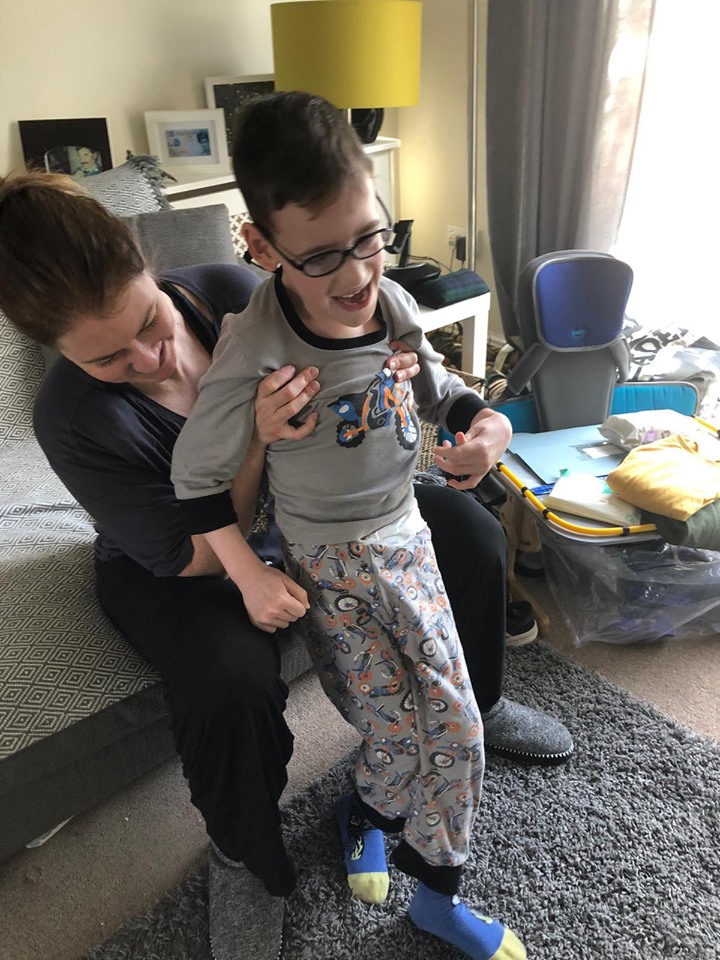8 Wheelchair, Sitting and Adapted Floor Workouts
Being active is great for our health and wellbeing. It maintains cardiovascular health (preventing conditions like stroke and heart disease), boosts mental health and self-esteem, and assists our bodies in managing blood sugar and insulin levels, which can help with weight control.
Exercise also has developmental benefits for children and young people. As well as supporting physical development (strength, stability, mobility), movement can boost cognitive skills like planning, problem solving and bilateral integration – using the two sides of the body and brain together.
No matter what fitness level or physical abilities our child has, moving a little bit more than normal will help them get fitter and stronger. Any movement counts!
Because it’s not always possible to get out, exercising at home can be a nice option for our children. The Internet is a great place to start – there are lots of freely available exercise videos online, some of which are specifically aimed at children with additional needs. We share some of our favourites below.
Our child can enjoy activity at home in other ways too: check out our fun sports and games ideas for wheelchair users and those with hemiplegia or diplegia.

Improves strength which leads to better gross motor skills and more independent living.
Improves sleep which is very often a problem with those with physical difficulties.
Reduces constipation – as the body moves, the muscles in the stomach contract, moving the stomach contents. This helps with painful trapped wind and constipation.
Protects joints by increasing muscle strength which takes pressure off the joints. 80% of 21 yr olds with Cerebral Palsy have chronic pain in their joints so getting stronger can help reduce pain and maintain or increase their function.
The pull of muscles and weight bearing both increase bone density – reducing the risk of fractures.
Exercise can help to maintain or increase muscle length through active stretching – keeping ranges of motion in joints and enabling better gross motor skills and thus improved function and independence.
Exercise can reduce fatigue and improve exercise tolerance, improving function and independence in everyday tasks.
These videos are mostly exercise for children in wheelchairs but you could adapt if your child works well in a high kneeling position
This video provides slower paced wheelchair exercises.
It has been made for those with spinal injuries but would work well for those with Cerebral Palsy with arm involvement/quadriplegia.
There are some lovely exercises at the end with weights – use socks, bottles, herb bottles or anything you’ve got lying around the house instead!
These videos created by Teens on the Move are great for young people in wheelchairs or with some standing ability.
Mostly aerobic exercises to get you out of breath and good for keeping mobile in your chair – great for all round fitness.
These great ‘getting started’ videos by Parasport have some lovely wheelchair exercises for arms and some leg exercises – great stretches.
This also has some options for people who can stand – or you can mix and match if you tire easily.
Another lovely video from Parasport but this is for an aerobics workout.
This also has some options for people who can stand – or you can mix and match if you tire easily.
This first video shows neck, arm and shoulder positions and stretches – going through all the movements in clear and easily follow-able instructions.
This concentrates more on the spine but also involves some arm movements at the same time.
This series has been done by health professionals and therapists and there are a few different options:
Triplegia, Muscular Dystrophy, Hypotonia, Diplegia and Ataxia.
These are all for mobile children but you may be able to adapt for some of the children who aren’t quite walking.
This is a series of high intensity, cardio workouts to do in a wheelchair or in a sitting position.
They are probably best for those of you with moderate to high function in your arms and body. There is some leg work but you can keep going with your arms if you are unable to follow the leg exercises. The exercises are fast paced but you can follow at your own speed and join in with the bits you are able to do.
If you don’t have a stretchy band, use a tin/ bottle/ piece of fruit etc to add some weight to the movement. As you get used to the exercises, you can try to stretch further in each movement or increase your speed or weight to progress.






